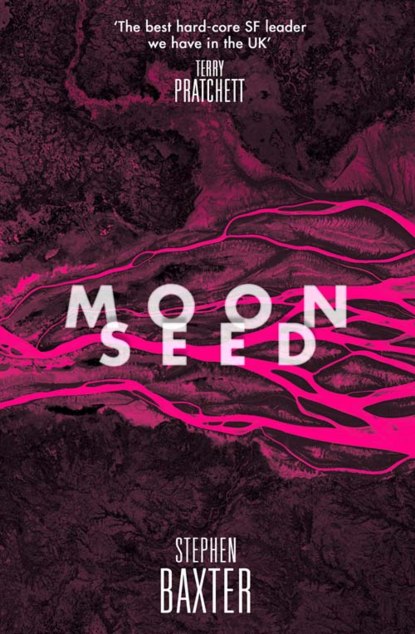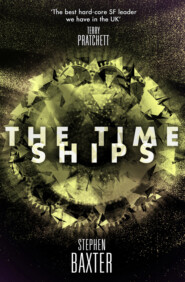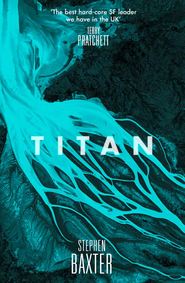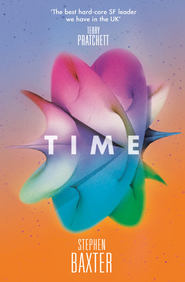По всем вопросам обращайтесь на: info@litportal.ru
(©) 2003-2024.
✖
Moonseed
Автор
Год написания книги
2018
Настройки чтения
Размер шрифта
Высота строк
Поля
‘Why? You can’t think there is any danger of contamination.’
‘Of us, by the rocks? Hell, no. But they planned for it back in the ’60s. They even sterilized the films the astronauts brought back from the Moon’s surface. No, now we’re more concerned with protecting the Moon rocks from us.’
Jane leaned forward and inspected the Moon samples, where they nestled in the slit-open bags. ‘I’m not sure what I was expecting,’ she said. ‘Something – primordial. More glamorous. This looks like –’
‘What?’
‘Like jacket potatoes that got left too long on the barbecue.’
He laughed. ‘The Moon is a dark world, Jane; it only looks bright in the sky for lack of competition.’
She pointed to an empty bag. It was numbered ‘86047’. ‘What happened to that one?’
‘That’s the most important rock in this box. The focus of the study. It’s lunar bedrock. Possibly …’
The work on the Moon rock was actually picking up quickly – although Henry hadn’t had much time for any real science yet, as so much of his time was being taken up with organizational stuff. He had to ensure the lab assigned the right facilities for the preliminary studies he wanted to run – emission spectrometry, X-ray crystallography, mass spectrometry, X-ray fluorescence and neutron activation. He wanted to push for a scanning tunnelling microscope study, but there was no STM here, and Dan McDiarmid made it clear exactly where the boundary of his budget lay, as if every STM in the world had been transported to the Moon itself.
It put Henry in his place, and he spent a lot of time fuming and fighting for turf.
But the work itself had soon gotten going well enough.
Mike Dundas was proving to be a good choice as his lab manager, confirming Henry’s hunch. Mike made sure procedures and operations ran smoothly, and didn’t get in the way of the researchers, including Marge Case, who were waiting to start their studies.
He told Jane, ‘I’m interested in finding fragments of the Moon’s primordial crust, the first that formed after the Moon turned into a molten ball, after it accreted. Global melting: if it happened to the Moon, it must have happened to Earth, and other large bodies like Venus and Mars. But we have to know how it all happened. And the Moon is a natural place to study the process; the evidence is all buried deep on Earth, by the continuing geology of the planet.’
‘And is that what your bedrock fragment is? A piece of primordial crust?’
‘Unfortunately, no. We haven’t found a large crust fragment in any of the Apollo samples. But in bedrock like this we can expect to find fragments in the breccias, recycled repeatedly from earlier ejecta blankets … That is, smashed up and stuck back together again several times.’ He eyed her. ‘Come see what I’m doing.’
He led her to a bench, where he’d set up his petrological microscope. This was just a crude microscope, set up so you could look through a thin rock slice on a rotating stage, illuminated by a light source beneath. Jane squinted, trying to see.
‘Your brother is good at producing slides for this, over in the rock cutting lab,’ he said. ‘You take a thin section of rock – say, five millimetres. You polish it with carborundum, take some thin chips, stick them to glass with optical glue, and then polish them in a grinder until they’re no more than fifty microns thick. Thin enough to see through. The art is the finishing by hand that comes after that; you need better than five microns tolerance, and to get that you have to overcome faults in the jib you use, even in the glass slides themselves …’
She looked dubious. ‘I’m surprised they let you bring that thing in here.’
He looked at the microscope, through her eyes. It was kind of battered, he admitted. He’d picked it up for twenty bucks as an honours student when his department had a clear-out, and it had been old even then. But the mechanism still ran sweet as a nut, and the Swiss optics were as bright and clear as the day they were ground, and the ’scope, worn smooth with use, had been all over the world with him.
Henry expected to be buried with his ’scope.
Still, Mike had banned him from bringing its wooden box in here, which was even more disreputable.
He stepped forward to check the alignment. The view through the eyepiece was a disc of multicolored light, irregular shapes of bright colour. He twisted the analyser disc to show up the colours.
‘Take a look,’ he said. ‘Try to keep both your eyes open. After a while, you won’t see anything through your other eye.’
She bent, and turned the analyser as he showed her.
‘What do you see?’
‘It’s like a view down a kaleidoscope.’ Jane straightened up. ‘Wow. I’m dizzy.’
‘That’s your other eye cutting in. Forget it. The point of the ’scope is that you can see what minerals are present there, just by letting the thin slice filter polarized light.’
‘Just like that? At a glance?’
‘At a glance. Neat, isn’t it?’
‘What am I looking at? Your bedrock?’
‘No. That’s a reference sample. A lunar basalt from another suite, closer to the norm of the Apollo samples. Tell me what you see.’
She bent again. ‘Lots of small shapes, like a tiled floor. And, here and there, like pieces of stained glass window, rough discs and rectangles. Much larger shapes. Ships of glass, sailing among ice floes. As seen when on acid.’
He laughed. ‘What you’re looking at is a felted matrix of small elongate crystals of feldspar – that’s the grey stuff – pyroxene, yellow – and olivine, all the bright colours you can see, scarlet and yellow and pink and blue. And stuck in the matrix you have those bigger crystals, phenocrysts of pyroxene and olivine.
‘Now.’ He took out the slide, replaced it with another. ‘This is 86047. The bedrock. See if you can tell the difference.’
She looked.
‘No olivine.’
‘To a first approximation, yes.’
She straightened up, frowning. ‘So what?’
He lifted his white hat and ran a hand through his hair. ‘So, that’s wrong. I can’t figure out what process has taken out the olivine here.
‘Look – rock is made of silicon and oxygen, and other stuff. The basic structure formed by silicon and oxygen atoms is a tetrahedron. An olivine molecule is built around a single tetrahedron, with iron and magnesium atoms stuck on. So olivine is the most basic form, the mother of all silicates.
‘Deep in the mantle, at high enough temperatures, olivine is all you find.
‘But when a lump of mantle material rises and cools, more complex molecules can form. You put together the tetrahedra like building blocks. First you get pyroxene, which has single chains of tetrahedra, then amphibole, which has double chains, and then mica –’
‘I’ve seen mica. Flaky stuff, thin, papery sheets that you can chip off with a fingernail.’
‘Right. Mica is made up of sheets of the tetrahedra. But then, when the mica cools further, you have quartz. A three-dimensional lattice, a tough, hard crystal. So you are getting more and more complex silica structures, built of tetrahedra.’
‘So what happened here?’
‘I don’t know. It looks as if something has – accelerated the process, in this lump of Moon rock. Reworked the crystalline structure.’
‘Reworked? How?’
‘I’ve no idea. One tack we’re following is trying to replicate lunar mantle processes in the high-pressure labs.’
In these, he told her, you placed a small sample of your rock in a foot-high stainless-steel block called a bomb, and then pressurized it hydraulically, as far as twenty thousand atmospheres, which corresponded to pressures in the Earth’s mantle.
Sometimes the bombs failed, and lived up to their names. So the labs were run remotely, and had steel plates built into their walls, and blast chimneys.











